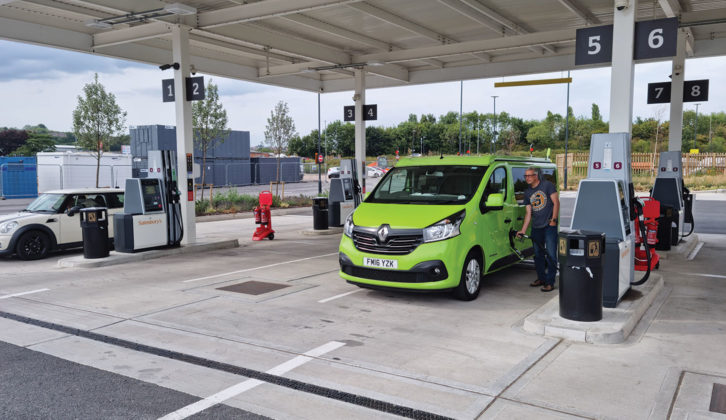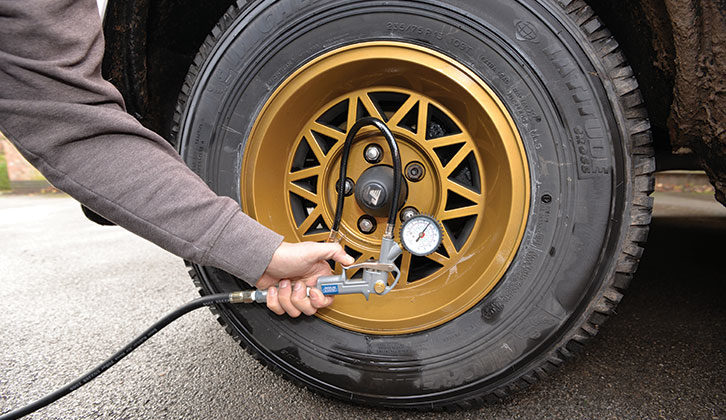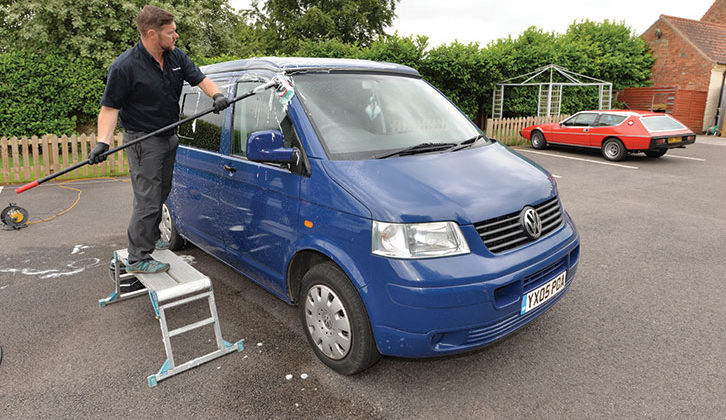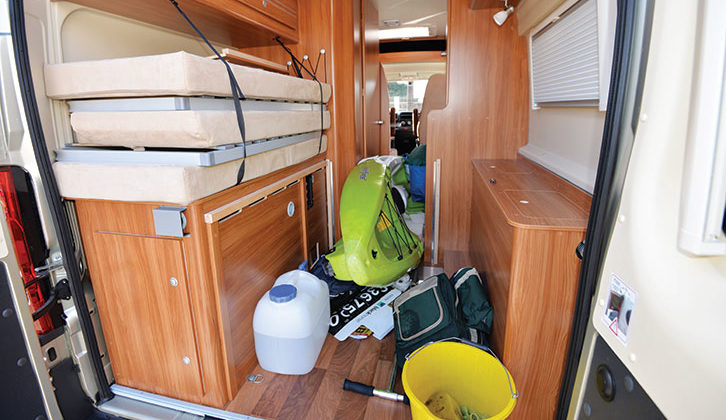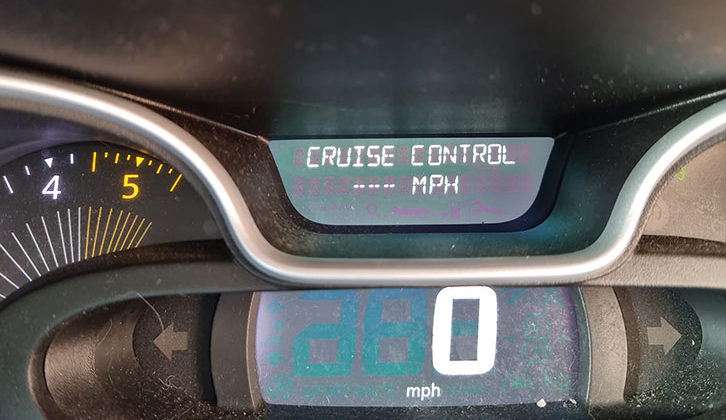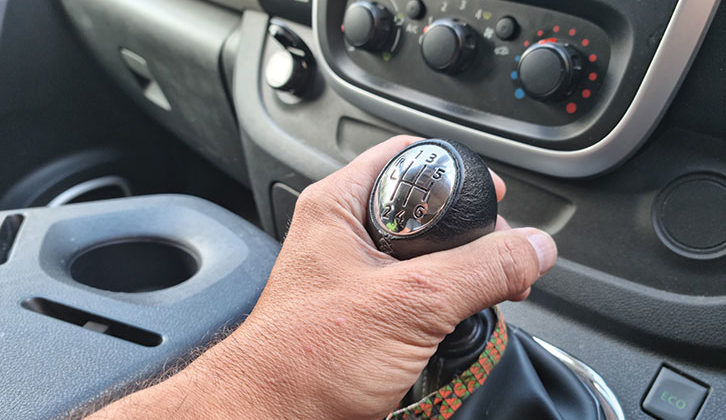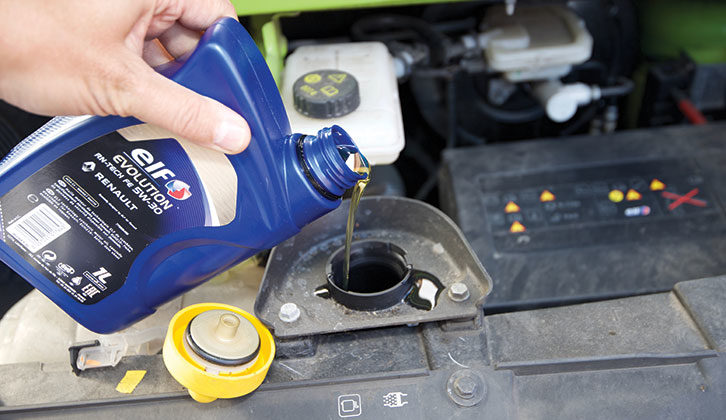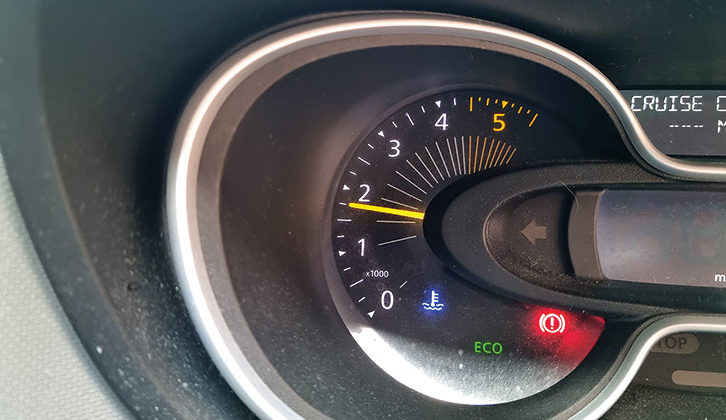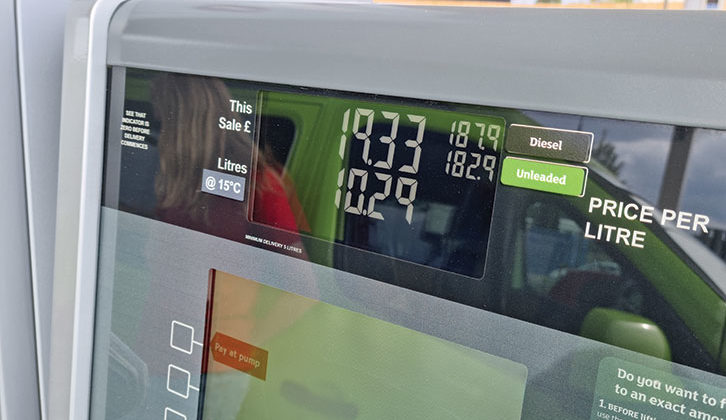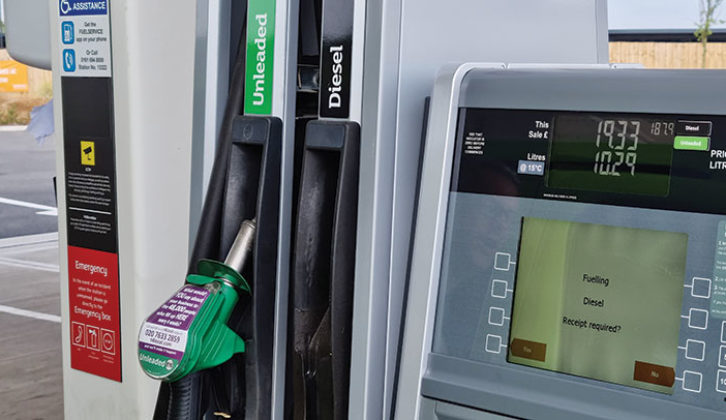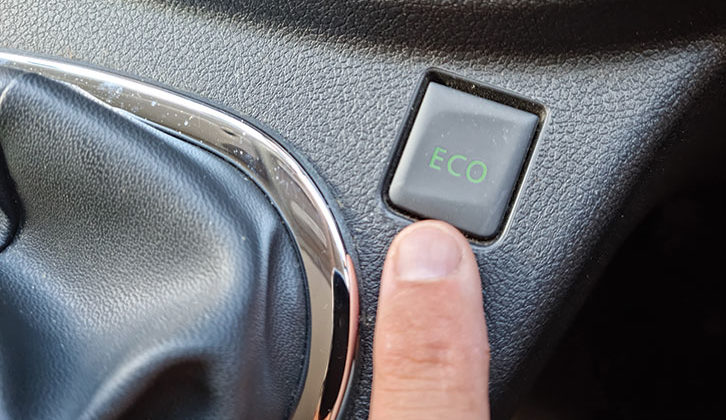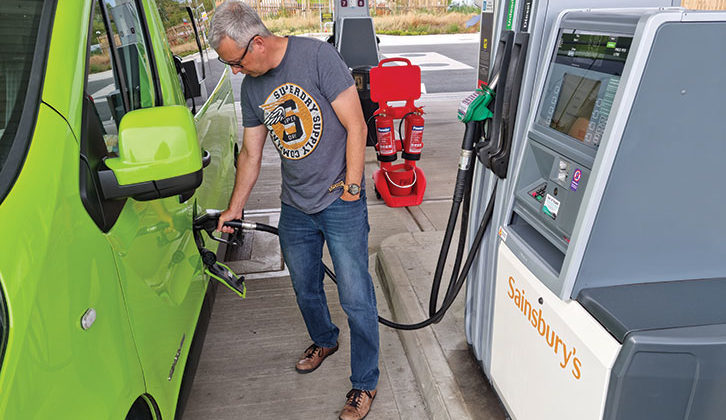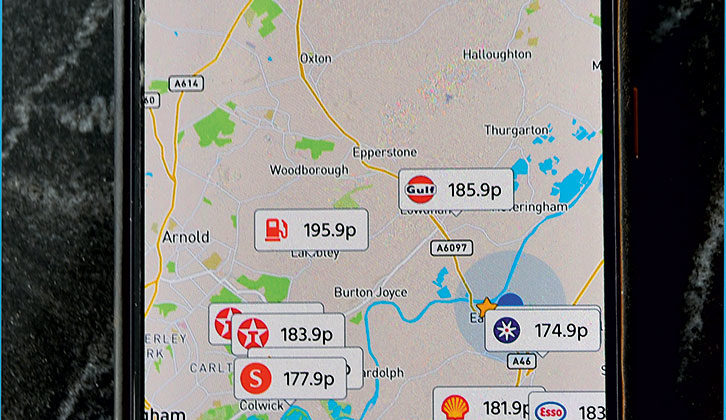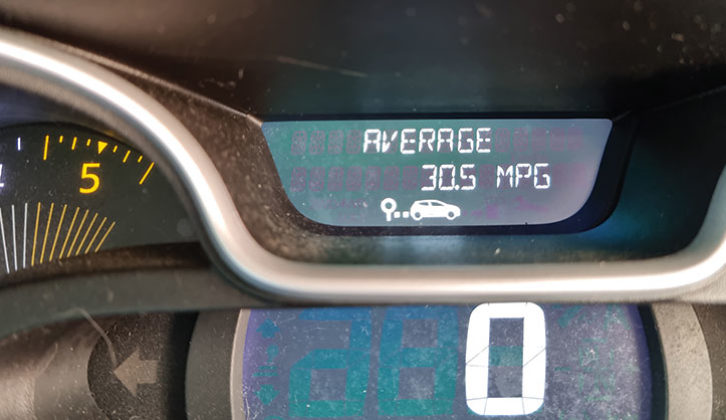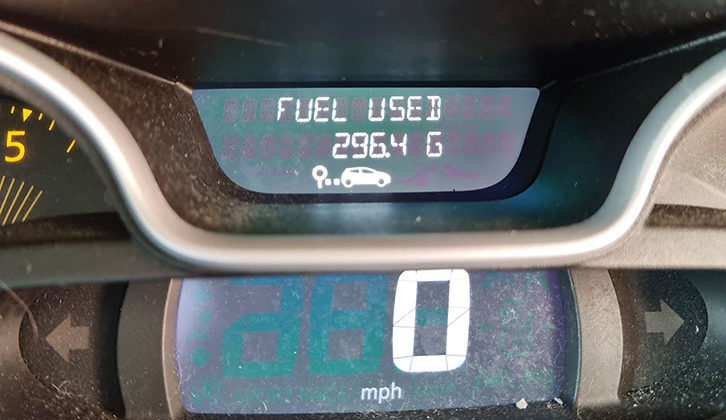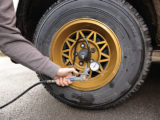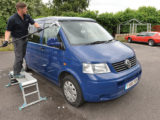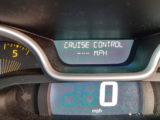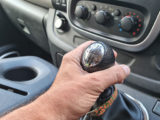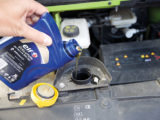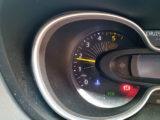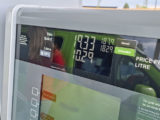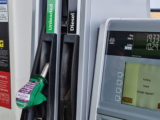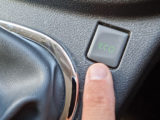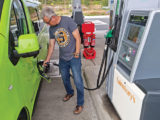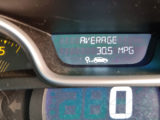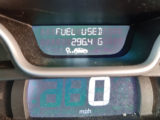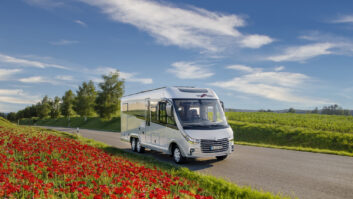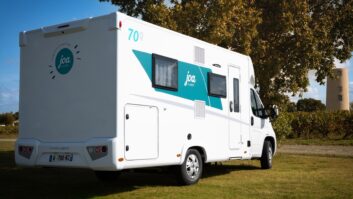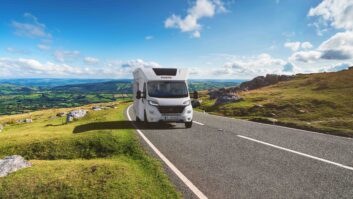Although the UK looks set for a future of electric and hydrogen vehicles, the reality is that most motorhomes run on fossil fuel and are likely to continue to do so for years. It therefore makes sense to ensure your motorhome fuel consumption is as efficient as possible.
It typically takes about 20 years for the UK’s car fleet to renew and given the long life of most motorhomes, the leisure vehicle transition is sure to take longer. So diesel and petrol will be with us until well into the 2030s.
With wars, Brexit, chip shortages and pandemics impacting on energy costs, and fuel prices recently hitting record highs, we’re in uncharted territory.
It therefore makes sense to ensure that your motorhome has as efficient fuel consumption as possible. It’s good for your wallet and the environment.
Vehicle bodystyle
Years ago for a fuel economy test, I was involved in driving three motorhomes, all using similar Ducato base vehicles. We conducted a series of tests with different drivers and a variety of road types over several hundred miles.
The final results were pretty clear cut. By far the biggest determinant of motorhome fuel economy was the bodystyle of the vehicle. This had a much larger effect on economy than engine size and in fact, on motorways, the bigger engines often proved more economical, because the drivers didn’t have to keep their foot to the floor on the hills.
The front of the vehicle had the most significant effect, with Luton-style overcabs being the least economical shape, followed by low-profile coachbuilts and then van conversions. This is logical – the larger the brick shape you’re trying to force through the air, the worse the economy.
So if you’re in the market for a new motorhome and are choosing between two different bodystyles, the lower and narrower the better, when it comes to economy. If your decision is between a high-top campervan or a pop-top model, the elevating-roof camper will almost certainly be more frugal.
But what if you already have a ’van and don’t want to swap it for anything with a smaller frontal area – what can you do to increase its frugality?
Easy wins to help improve your motorhome fuel consumption
Ensuring that your vehicle is clean and excess dirt is washed off the underside will make a fractional difference to its weight (see our guide to the best motorhome cleaners for help choosing the right product), as will reducing the weight of your kit. But these are the small gains.
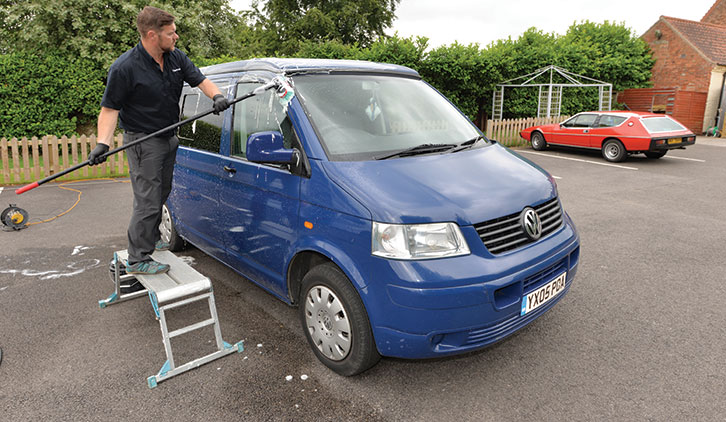
Bigger advantages are to be had by removing any top boxes when not in use (or ditching them) and making the roof as smooth and clutter-free as possible – for example, add aerofoils to the front of any rigid motorhome solar panels.
Tyre pressures are also crucial to your economy, and the higher the pressure – within the tolerances advised by your tyre manufacturer after weighing each axle – the lower the rolling resistance. Checking tyre pressures monthly or weekly can make a huge difference.
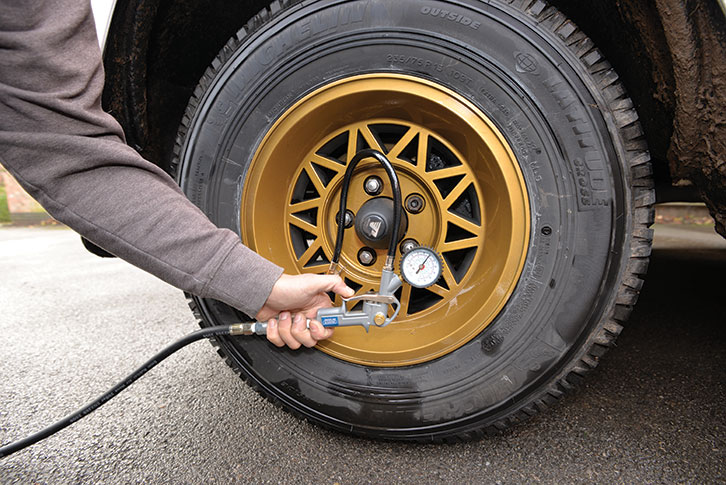
You can buy tyres with lower rolling resistance – so-called Eco tyres – but unless your current tyres need replacing, this isn’t a cheap option.
Bear in mind there can be a trade-off between economy and grip – this won’t affect the ’van’s on-road performance much, but could impede its ability to drive off a wet grass pitch.
Regular servicing is another good idea – if your engine is churning through gunky old oil, it will cause additional drag on the pump and bearings.
Some manufacturers detail a range of oil grades in the owner’s manual. The UK is classed as a cold country, so opting for thinner grades of oil (5W 30 rather than 5W 40) will offer less frictional resistance. Some newer vehicles run very thin oils – as low as 0W 20 – in a bid to meet emissions targets and increase economy.
Only use an oil grade and spec that is detailed in the base vehicle handbook.
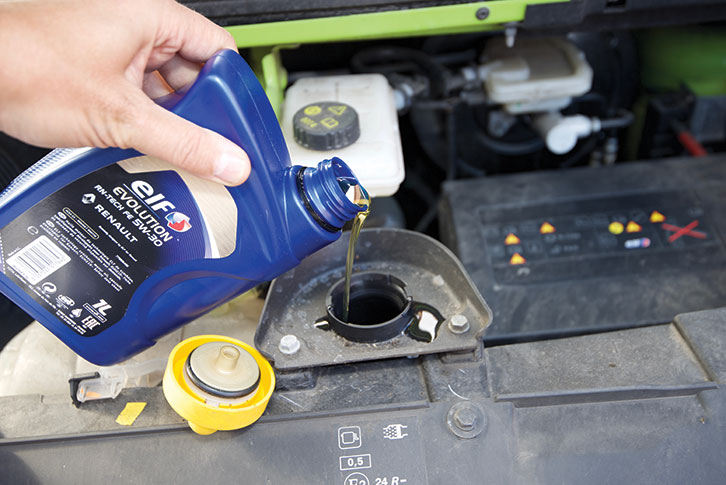
How driving style can improve your motorhome fuel consumption
The other easy win is your driving style. Economical drivers know to accelerate gently and try to maintain momentum by anticipating traffic, so as to reduce the amount of time they’re braking and accelerating.
Acceleration is the main factor in burning excess fuel, so minimising it is key. However, changing up a gear too early and having to use a lot of throttle to maintain speed isn’t helpful, either. Most modern vehicles have a gear change-up indicator that shows the ideal time to change gear. And if your ’van has an Economy button, use it.
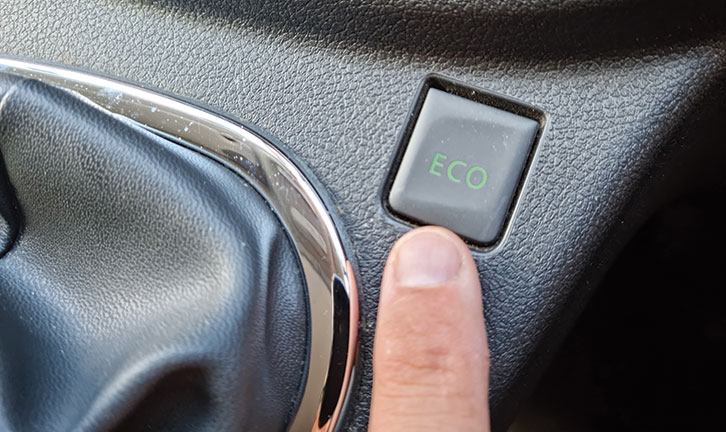
If you’re stuck in traffic and your vehicle doesn’t have a stop/start system, switch off the engine. There’s an old story that starting your engine every few minutes uses more fuel than letting it idle, but this is hogwash – you barely use any more fuel than normal starting up a warm engine. So if you’re caught by a red light, switch off.
The other point is basic – reduce your speed. Instead of cruising at 70mph (assuming that you can legally do so) on motorways, try 65mph, or even 55mph in the inside lane. You’ll be amazed! Keeping the revs below 2000rpm works well on many motorhomes, too.
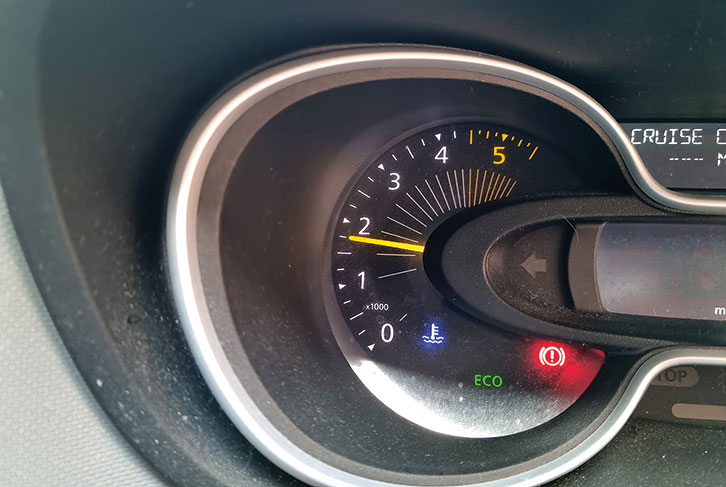
Using cruise control can also help, as you’re not increasing and decreasing speed. You might need to override the system and switch to a lower gear on hills, to avoid it using excessive throttle in top gear. On an automatic gearbox, this isn’t going to be an issue.
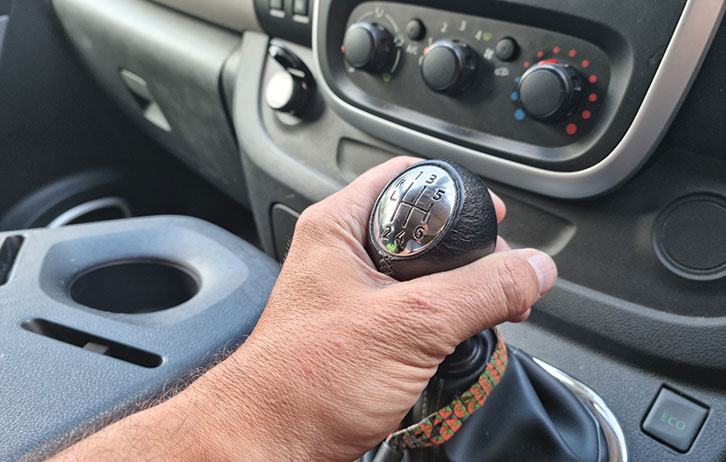
Additives
Most manufacturers now put warnings in their owner’s manual against using any additives in the fuel tank, and when Which? tested a range of these a few years ago, they found few made much of a difference and indeed, some made engine performance worse.
The manufacturers already include detergent and additive packages in their fuels (with super-unleaded and premium diesel getting the most), so there’s no real need to add extra potions to your tank. Save your money for fuel: you shouldn’t need to add anything to it.
The only exception to this is if you’re planning to leave your vehicle unused for a longer period of time (not just the usual winter lay-up, but a year or more), where adding a fuel stabiliser to the full tank can be beneficial.
In this case, the exception is a system running cleaning solvent through your fuel system, such as TerraClean.
Strictly speaking, you shouldn’t need to clean your fuel system – diesel and petrol are solvents in their own right – but low-mileage vehicles that only do short journeys (especially diesels) can have carbon build-up around the valvetrain and in their emissions control systems, so could derive benefit from a solvent-based clean.
Gadgets and widgets that help with motorhome fuel consumption
All manner of wonderful widgets have appeared on the market over the years to help with your motorhome fuel consumption, ranging from lead pellets that you drop into the fuel tank, to magnets that clip around the fuel lines, inline booster fans in the induction manifold, and even electric boxes that you wire onto the battery to increase economy.
None will make a jot of difference – except, that is, to your bank balance. Automotive manufacturers are no fools and if any of these gadgets actually worked, they would have been built into their vehicles already.
The warning signs for a poor product are usually the same: pages of reviews from ‘customers’ and pseudo-scientific testing in labs you’ve never heard of. As with all of these things, if it looks too good to be true – it probably is.
Paying for premium fuel
So is it worth spending extra on posh diesel or petrol? You’ll have spotted the choice of two pumps for unleaded (usually denoted E10 and E5), as well as two types of diesel. These go by various brands, depending on the retailer.
In the case of a petrol motorhome, the more expensive E10 grade offers a slightly higher octane number – useful for performance engines but not that relevant to a ’van – and contains an enhanced additive package compared to the cheaper 95 octane fuel.
Some drivers reckon the higher grade of unleaded results in marginally better economy, but in general, this won’t cover the higher purchase price. The detergent package is a benefit, though, especially if your petrol motorhome only ever does short journeys or a lot of stop/start town driving. But unless you regularly suffer emissions warning lights on your dashboard, it’s not going to be essential to use expensive fuel.
Premium diesel can make a slight difference to the performance of a high-powered engine, but few ’van engines are that powerful, so you probably wouldn’t notice it.
However, additive packages can include compounds to make the vehicle easier to start in cold weather, as well as offering a higher level of detergent. This can be useful for ’vans that do lots of short journeys and can help reduce their carbon build-up.
If you do fewer than 5000 miles a year in your motorhome, it’s worth running a tank of premium diesel through it once every few thousand miles.
All petrol and diesel, premium and regular, has to meet strict standards for use in your vehicle, so whatever you fill up on should work fine in your ’van.
One thing you need to be aware of is the biofuel content. A percentage of these plant-based chemicals is added to all UK fuels, but you should never exceed the maximum for your engine. Biofuel might seem engine-friendly, but it is actually chemically aggressive. So you need to take care to refuel with the correct percentage for your engine.
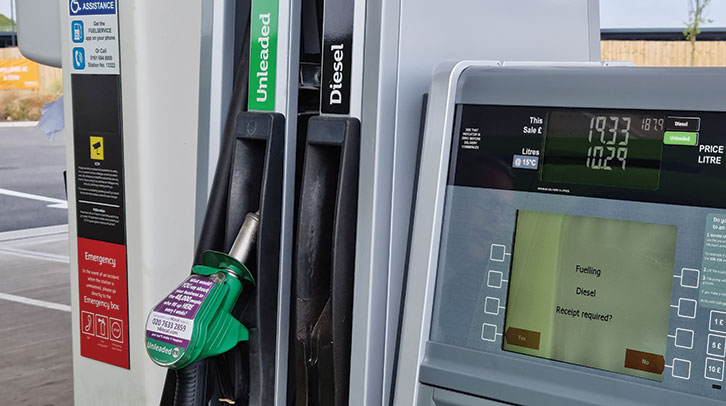
For example, B7 on a diesel nozzle means it has 7% biofuel, while E10 petrol contains up to 10%. In Europe, percentages can be higher (as much as E85 – 85% biofuel) and these can cause problems with internal seals on older engines. Check the owner’s manual for the maximum your engine tolerates.
Remapping
If your petrol or diesel motorhome has a turbocharger, it is worth considering getting it remapped for economy. You can remap some non-turbo vehicles, but the gains are smaller and might not cover the cost of the remap.
With a turbo remap, you can often gain a little power and torque, which allows you to use a higher gear slightly earlier without having to use as much throttle, keeping the revs down. Gains of over 20% in power are typical for a Ducato turbodiesel.
However, use this extra power fully and you’ll also use more fuel, so you need to match your driving style to the remap. Gains of up to 15% are possible with a remap and careful driving, but if you drive with your foot to the floor, economy will be unchanged, or worse.
Flash reprogramming of your ECU, the best method of remapping, involves uploading new software to the existing unit via the diagnostic port. This can easily be reversed.
Bear in mind that engine remapping could affect your manufacturer warranty and you will need to inform your insurance company about it (most providers don’t charge extra if you have this done).
It’s also worth noting that some base vehicle manufacturers already have an economical map built into the ECU, so if your vehicle has an Eco or Economy button to press, try using it.
Fuel membership cards
If you only ever fill up the tank at your local petrol station, or favour a certain brand, it’s always worth getting hold of one of their fuel cards.
Typically these don’t save you that much money, but if you fill up there anyway, there is no harm. It’s easiest to have all of the fuel cards stored in your phone, so you don’t have to carry a walletful of plastic around with you. Using the payment system on your phone also gets around the contactless limit on your debit card, which is very useful, given that a full tank in a ’van now tops the £100 mark.
However, don’t let a branded fuel card make you become loyal to one particular brand – a false economy, as prices vary so much regionally.
In the main, it’s always going to be better to shop around in your area and simply use the cheapest local supplier – branded fuel stations tend to be more expensive than the supermarkets.
Supermarket fuel
Some of the more ill-informed corners of the internet still seem to believe that supermarket fuel is inferior to branded fuel (for example, Shell, BP, Esso and so on), but this isn’t the case, because petrol stations are all refuelled by trucks working from similar refineries. The additive packages can vary at the fuel stations, but the base fuel is identical.
So there’s absolutely nothing wrong with supermarket fuel and you could argue that the keen prices mean their tanks are replenished more frequently, so that the fuel might be fresher.

Things that can affect fuel quality are the age of the storage tanks at the fuel station (the newer, the better) and when they were last refilled.
When underground fuel tanks are refilled, the sediment and dirt at the bottom of the tanks is disturbed and must be allowed to settle for at least an hour before any vehicles can be refuelled from that tank.
Fuel stations do have filters on their tanks and they monitor the amount of condensate water that forms in the fuel. They won’t sell you fuel outside certain limits.
So don’t worry too much about where you buy your fuel – just go for your cheapest modern fuel station.
Use a fuel saver app
There are various useful apps available these days to monitor petrol prices, and it’s easy enough to carry out a simple search of any area where you are holidaying, to track down the lowest-cost fuel nearby.
For example, petrolprices.com claims it can save you as much as £200 a year in fuel costs, by simply being more savvy about where you refuel.
Costco fuel
Business owners can make big savings on fuel with a Costco card. You also get a spouse card free with a trade membership (which costs £26.40) and you can add up to six additional cards (at a charge of £16.80 each) to your account. So if you know anyone who runs a business, you can pretty easily get linked to a trade card.
At the time of writing, a local Costco was selling diesel for £1.72 a litre, while the nearby Shell garage was charging £1.98, so savings can be substantial. Given that sort of saving, you’ll get back the cost of your membership card in just one full-tank fill-up (or two if it’s your trade card).
As well as the discounted fuel, Costco also sells all manner of other wholesale priced items, which can all help to save you money (for example, engine oil), so it’s a useful card to get. If you’re local to a Costco and switch to its fuel, savings can be considerable.
Economy driving and low mileage
One thing to be aware of if you only drive economically using low revs and only ever do short journeys is that the engine will be more prone to carbon and soot build-up. This is especially true for diesel engines that are only run for less than 20 miles at a time.
A byproduct of burning diesel fuel is the generation of soot and particulates. The more gently you drive the vehicle, the more these elements can build up. If the engine only does short journeys, it might not even get up to its normal operating temperature and may be unable to burn off these particulates. Low-mileage diesel motorhomes often suffer with emissions problems at MoT time for this reason.
While particulates are usually dealt with by the exhaust gas recirculation system and catalytic converter, these devices do not function at their most efficient if they’re not hot and fully up to operating temperature.
To prevent the engine becoming overly choked with carbon emissions internally, it’s wise to give your ’van a motorway run every now and again.
Make sure that you do more than 20 miles and also give it full revs through the gears while you’re accelerating on the slip road. Yes, it means losing a few mpg, but it will save you the cost of having to get the engine decarbonised in the future if you fail an MoT.
Watch your mpg
Most motorhomes these days are fitted with some form of computer, which will provide you with a read-out of your mpg. They will usually give two figures – the instant mpg read-out and the calculated average.
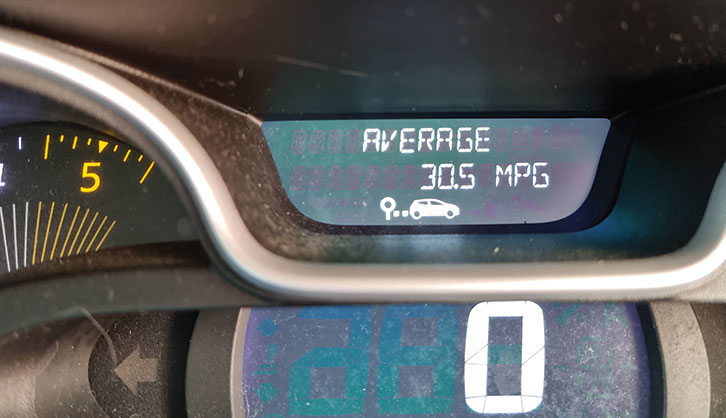
The instant figure can be useful for checking how economically you’re driving and allows you to experiment with your driving style, to see how different gears and throttle angle
will alter the number shown.
Some drivers find it useful to keep this display up all the time and refer to it constantly, while others tend to consider it rather distracting – see what works best for you.
With the average mpg read-out, it’s best not to take this number as gospel. It’s far more accurate to get into the habit of writing down the mileage and fuel amount needed to brim the tank every time you fill up the vehicle.
Let’s say you add 65 litres and cover 429 miles. There are 4.54 litres of fuel per gallon, so if you have 65 litres, it’s 65/4.54 = 14.3 gallons. Doing 429 miles on 14.3 gallons = 30mpg.
Just like food diaries that detail all you have eaten and invariably make you more aware of overeating, logging your mpg will focus your mind and can help you get into the habit of driving your motorhome more economically.
Verdict
There are lots of small wins that you can achieve to improve your motorhome fuel consumption and you don’t need to alter that much to make a significant difference.
Combining a slight change in driving style with regular tyre pressure checks and carefully shopping around for the best fuel price can be all that is needed to save hundreds of pounds a year.
Fuel prices are like taxes – they’re not going down any time soon, so it pays to become a mileage miser!
See what our writer had to say about vehicle emission devices too.
If you enjoyed this, why not take a look at these:
- Looking to get your ‘van’s interior back to its best? Then our best motorhome vacuum cleaner guide is sure to help
- We talk you through how to clean a motorhome
- We examine the pros and cons of going gasless in your motorhome
If you’ve enjoyed reading this article, why not get the latest news, reviews and features delivered direct to your door or inbox every month. Take advantage of our brilliant Practical Motorhome magazine SUBSCRIBERS’ OFFER and SIGN UP TO OUR NEWSLETTER for regular weekly updates on all things motorhome related.
